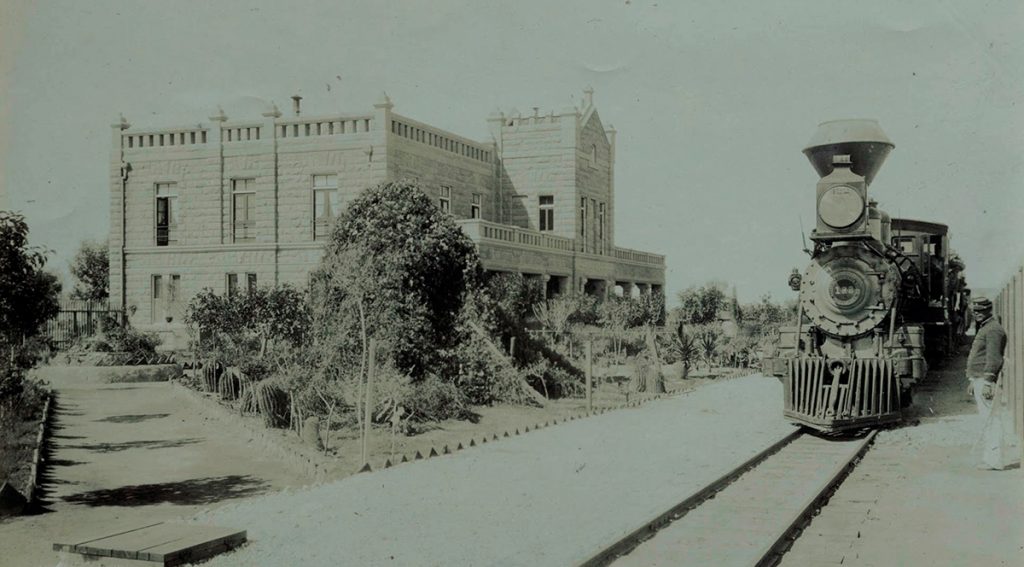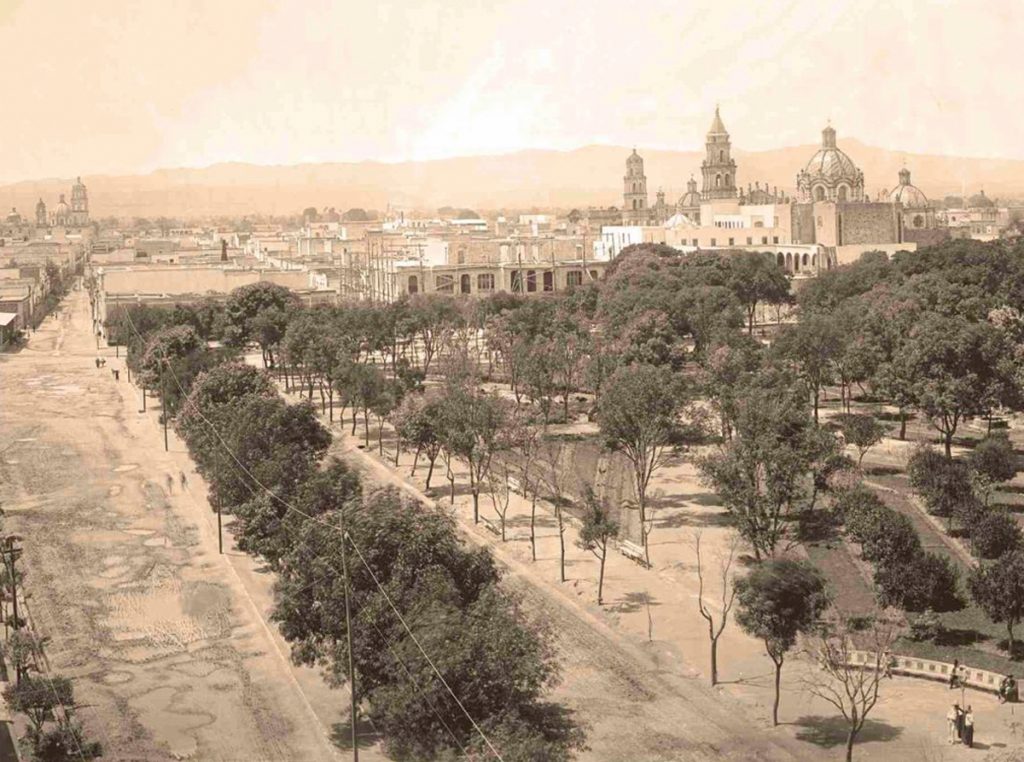At the beginning of Porfirio Díaz’s government, Mexico’s railway network went from Veracruz to Mexico City and viceversa. Lerdo de Tejada had built a branch to Puebla and another to Villa de Guadalupe one year earlier. It was a little over 900 km. Nothing else.
The first line that was built under his administration was the Central Mexican Railroad owned by an American Company that started in Mexico City, all the way to El Paso.
In 1880 the same company bought the rights for a concession that Emperor Maximiliano had given to Mexican investors, among them several potosinos such as Ignacio Muriel Soberón, his half-brother Matías Hernández Soberón, the Barrenechea family, Antonio Delgado Rentería and Felipe Muriedas, for a line from Aguascalientes to Tampico passing through San Luis, with the intention of extending it to the Pacific, which was never achieved. This line was put into service in april 1890, reaching all the way from Tampico to Mexico City, going through the State of San Luis Potosí, with a station in the town of Ébano, which around ten years later would become one of the first oil-extraction landmarks in the country.

At around the same time, another American Company called National Mexican Railroad acquired the permit for another route going up North. Starting in Mexico City and reaching Laredo, it went through Toluca, Celaya, San Miguel de Allende, San Luis Potosí, Catorce, Saltillo, Monterrey, and finally crossing the border. This railroad line received much attention as it went over the border, opening a new era of international trade. Porfirio Diaz attended the festivities held in San Luis Potosí on november 1888.
As part of the line station’s construction deal, the railroad companies asked the government to donate or sell the land of the Paseo de la Constitución, which is now the Alameda, for a price below market average, as they needed space for repair shops and housing quarters for the workers.
As the news of this intended deal leaked protest arose: Mrs. Luisa Ipiña, a society matron, among almost 200 other San Luis Potosí society ladies, demanded the governor in turn, Carlos Diez Gutiérrez, to respect these land, which would later become the Alameda, as an important place of recreation for the city.

At the end their goal was met as lands North of the Alameda were destined to the Central Railroad: They repurposed the old tram station already there, connecting to the town of Soledad; and the lands to the East were assigned to the National Railroad. Each had its own rail yards and bridges to cross the Río Santiago.
The line from Aguascalientes to Tampico had 70 stations scattered across the State of San Luis Potosí. The most importants were Salinas, Cerritos, Cárdenas, Valles, and Tamuín; and of course San Luis Potosí, with the addition of a branch to Rioverde built under Pablo Verastegui’s management.
Going up North, the line going from Mexico City to Laredo had 21 stations over the State’s Centro and Altiplano regions, among them Villa de Reyes, Moctezuma, Venado, Charcas, Catorce and Vanegas. An additional branch left Vanegas to Cedral and Matehuala, built by Felipe Muriedas. With them the city became the first in Mexico with direct connection to the four cardinal points and one of the few to be connected with the United States and the Gulf of Mexico.
Another route operating was the Potosí-Rioverde: a concession granted to the Mexican Metallurgical Company that never reached its destination. It was known as “El Piojito” (the little lice) because it had a small engine, only reaching the Sierra de Álvarez, from where they brought wood used as fuel in the Morales smelter.
Article written by:
Luis López Palau
History of San Luis Potosí Enthusiast






